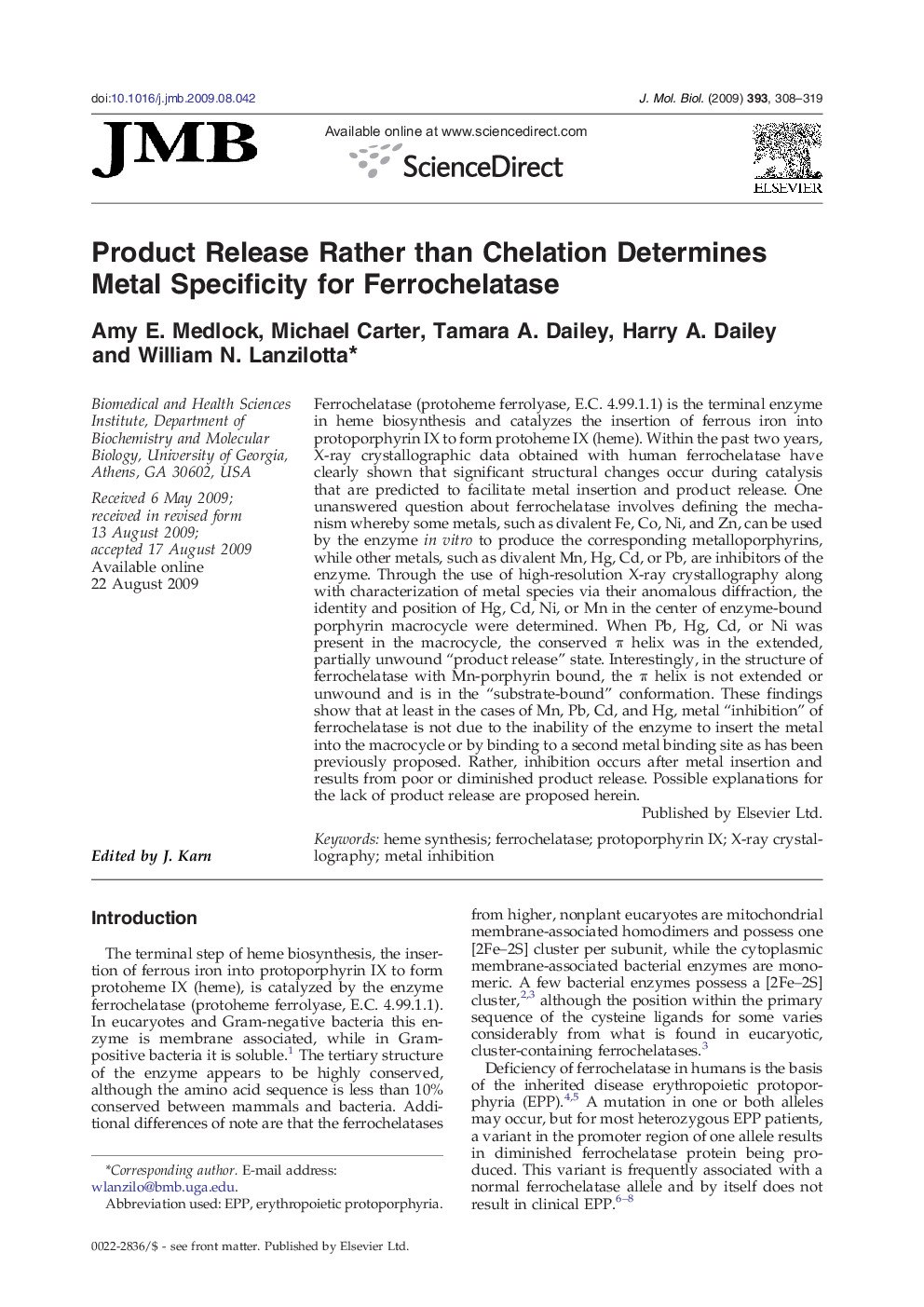| کد مقاله | کد نشریه | سال انتشار | مقاله انگلیسی | نسخه تمام متن |
|---|---|---|---|---|
| 2186199 | 1096040 | 2009 | 12 صفحه PDF | دانلود رایگان |

Ferrochelatase (protoheme ferrolyase, E.C. 4.99.1.1) is the terminal enzyme in heme biosynthesis and catalyzes the insertion of ferrous iron into protoporphyrin IX to form protoheme IX (heme). Within the past two years, X-ray crystallographic data obtained with human ferrochelatase have clearly shown that significant structural changes occur during catalysis that are predicted to facilitate metal insertion and product release. One unanswered question about ferrochelatase involves defining the mechanism whereby some metals, such as divalent Fe, Co, Ni, and Zn, can be used by the enzyme in vitro to produce the corresponding metalloporphyrins, while other metals, such as divalent Mn, Hg, Cd, or Pb, are inhibitors of the enzyme. Through the use of high-resolution X-ray crystallography along with characterization of metal species via their anomalous diffraction, the identity and position of Hg, Cd, Ni, or Mn in the center of enzyme-bound porphyrin macrocycle were determined. When Pb, Hg, Cd, or Ni was present in the macrocycle, the conserved π helix was in the extended, partially unwound “product release” state. Interestingly, in the structure of ferrochelatase with Mn-porphyrin bound, the π helix is not extended or unwound and is in the “substrate-bound” conformation. These findings show that at least in the cases of Mn, Pb, Cd, and Hg, metal “inhibition” of ferrochelatase is not due to the inability of the enzyme to insert the metal into the macrocycle or by binding to a second metal binding site as has been previously proposed. Rather, inhibition occurs after metal insertion and results from poor or diminished product release. Possible explanations for the lack of product release are proposed herein.
Journal: Journal of Molecular Biology - Volume 393, Issue 2, 23 October 2009, Pages 308–319